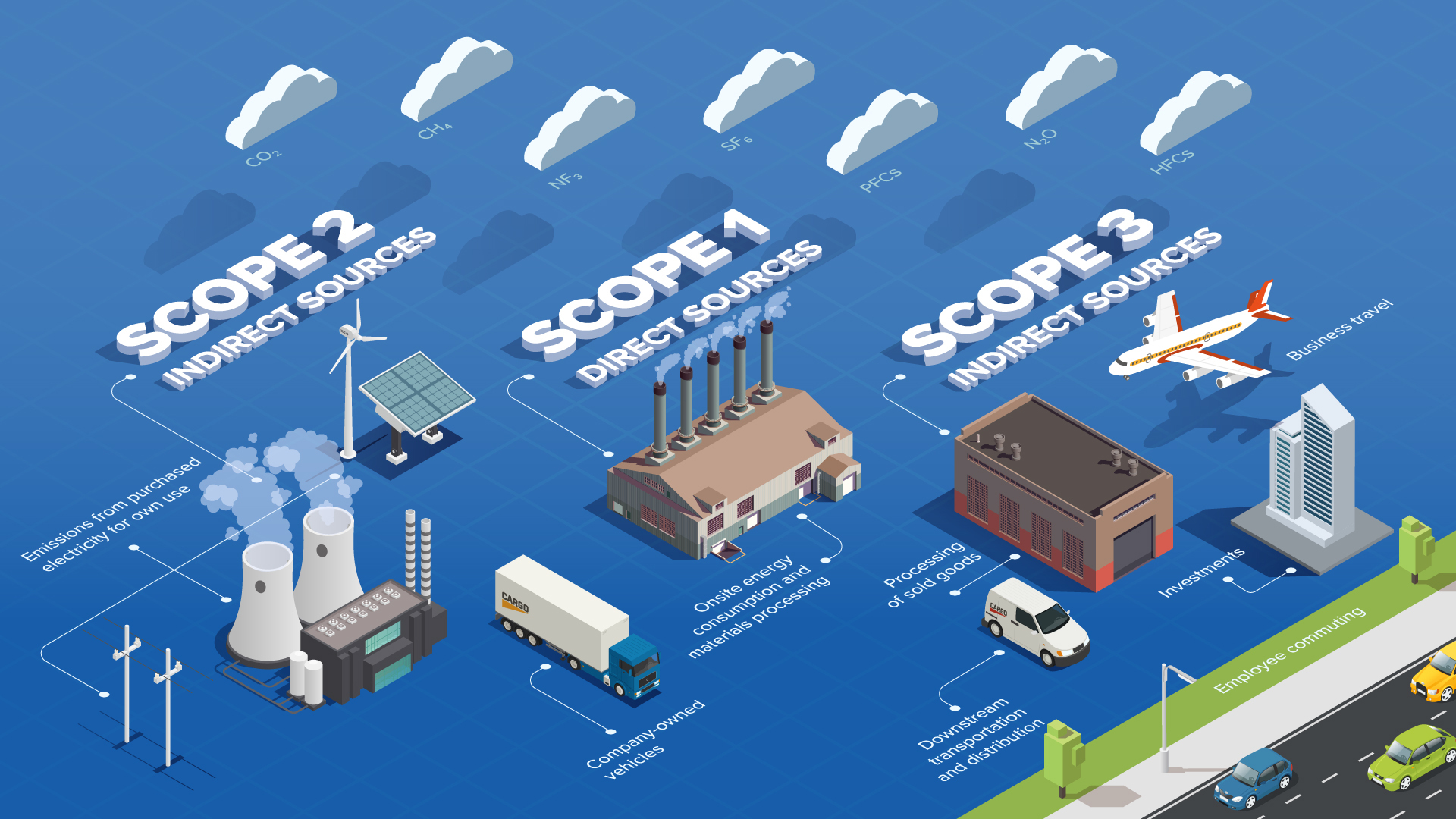As the world grapples with rising global temperatures, now approximately 1°C above pre-industrial levels, the repercussions are unmistakable. The increasing frequency of extreme weather events, the melting of ice caps, and rising sea levels paint a stark picture of the climate emergency at hand.
Central to the discourse on climate action is the concept of emissions calculations. This process, crucial for quantifying the greenhouse gases emitted through human activities, serves as a foundational pillar in the global endeavour to combat climate change. Emissions calculation is not just an exercise in accountability but a strategic tool for informed decision-making and sustainable development.
Understanding Emissions Types: A Primer
Emissions calculations delineate between three primary categories, offering a comprehensive view of an organization's carbon footprint:
Scope 1 Emissions: Direct emissions originating from owned or controlled sources. e.g. a company’s fleet.
Scope 2 Emissions: Indirect emissions from the acquisition of electricity, steam, heat, and cooling.
Scope 3 Emissions: All other indirect emissions linked to a company’s operations, encompassing both upstream and downstream activities.
Along the Value Chain: Upstream and Downstream
"Upstream" and "downstream" refer to the different points along the value chain where greenhouse gas emissions can occur. These terms help organizations identify and manage their carbon footprint more effectively by categorizing emissions based on their source in relation to the company's direct operations. Understanding these concepts is crucial for developing comprehensive emission reduction strategies and for reporting under frameworks such as the Greenhouse Gas (GHG) Protocol.
Upstream Emissions
Upstream emissions, often classified as Scope 3 emissions in the GHG Protocol, are indirect emissions that occur before a product or service reaches the company. These include emissions associated with the extraction, production, and transportation of materials and services that a company purchases to conduct its business. Examples of upstream emissions include:
The extraction and processing of raw materials.
Manufacturing of components or products by suppliers.
Transportation of purchased goods and services to the company.
Upstream emissions are critical for companies to understand their complete environmental impact, especially for those aiming to reduce their carbon footprint across their supply chain.
Downstream Emissions
Downstream emissions are also a type of Scope 3 emissions, but they occur after the company's product or service has been sold and delivered to the end-user. These emissions include those related to the distribution, use, and disposal of a company’s products and services. Examples of downstream emissions encompass:
Transportation of sold products to the end consumer.
Emissions produced by the use of the company's sold products (e.g., emissions from fuels sold by an energy company).
End-of-life treatment of sold products, including disposal, recycling, or waste management.
The Path to Emissions Calculation
The benefits of rigorous emissions calculations are manifold. Beyond the fundamental goal of environmental conservation, it fosters operational efficiency, enhances corporate reputation, and ensures compliance with regulatory mandates. Moreover, it positions companies as leaders in the global sustainability movement, attracting customers and employees alike who share a commitment to the planet's future.
Zeroe: The Software to Calculate Your Emissions
At Zeroe, we understand the challenges and opportunities of emission calculations. Our enterprise-grade platform is designed to streamline the calculation of Scope 1, 2, and 3 emissions, offering a turnkey solution for companies at the forefront of climate action. By automating this critical process, we enable businesses to not only comply with emerging standards and frameworks but to lead by example in the transition to net zero.
